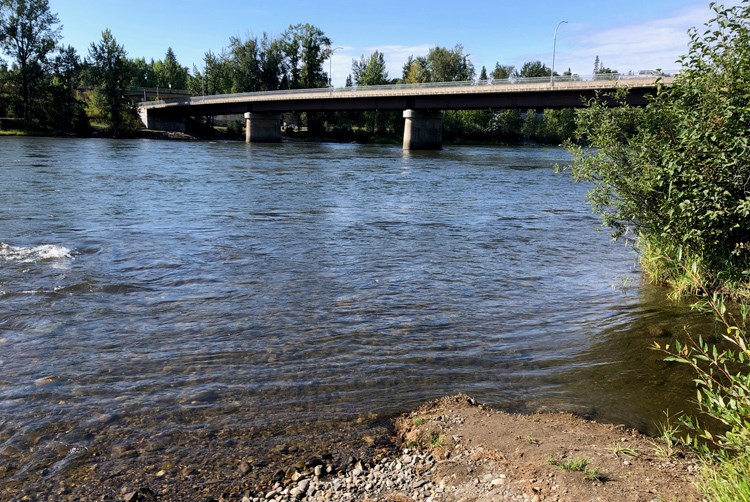Editor's note: This story first appeared in the Oct. 6, 2014, edition of The Citizen.
A look at a Prince George map will show that the Cameron Street Bridge connects the roundabout intersection of North Nechako Road and Prince George Pulp Mill Road on the north side of the Nechako River to the railway overpass and intersection between Carney Street, First Avenue and River Road on the south side of the river.
So why isn't it called the River Road Bridge, First Avenue Bridge or simply the Nechako Bridge, as it was once known?
For the answer to that, we have to look back into the history of the city to when there were three competing communities here - South Fort George, Fort George (also called Central Fort George to avoid confusion with the Hudson's Bay trading post of the same name) and Prince George.
The current Cameron Street Bridge is the third bridge to stand on that site. The first was built in 1916, replacing a cable ferry which crossed the river upstream of the current bridge.
The June 7, 1916 edition of the Prince George Citizen reported that plans for the Nechako Bridge, as it was then called, arrived at the office of the road superintendent.
"These provide for a fine looking bridge consisting of three truss bands of 130 feet each, and the drawbridge span of 132 feet, a length which approaches 738 feet, with the wagon road 16 feet [wide]," The Citizen reported. "Work is go ahead at once. The last of the piling will be at the bridge site today, and R. Haney, of Prince Rupert, who was in charge of the construction, is now laying out the workman's camp on the flat this end of the bridge. Mr. Haney expects to employ 20 to 25 men, and to complete the structure by the end of September."
The Nov. 17, 1916 edition of the Prince George Star reported the Nechako Bridge opened to the public on Nov. 15, after several delays due to shortage of materials -although work was still being completed on the drawbridge and railings.
"While, perhaps, we have not progressed as fast as some thought necessary, the opening of a highway across the Fraser and Nechako rivers marks an era of development in the district that will make communication with the city easy during this season of the year, when the river is impassable, and should greatly assist in the settlement of land in all directions, besides adding to improved business conditions and helping to boost the city along to its logical position as the center trading point of a rapidly opening country," the Star reported.
"The road leading from the bridge to the center of the city is in good condition, having been graded by those in charge of municipal improvement."
At the time the bridge was built, it was located in Central Fort George, not Prince George.
A 1910 town plan of Central Fort George shows the street which lead to the bridge was called Cameron Street, prompting the name of the bridge.
The original bridge was damaged by an ice jam in 1931, and a new Cameron Street Bridge using Howe wooden trusses on concrete piers, was built beside the old bridge.
In 1953 Central Fort George joined the City of Prince George. Cameron Street was renamed First Avenue, as that is what the street was called in Prince George.
In September 2005 rot was found in the wooden bridge's structural members, and the Cameron Street Bridge was closed to traffic. A new bridge, built on the existing concrete piers opened in August 2009, but the historic name was kept - a link to a town and a street which no longer exist.
"For 30 of the city's formative years it was the only bridge crossing to the north side of the river. Even after another crossing was built it remained an important connector for the growing industry on the north side," the Prince George Community Heritage Commission wrote in a 2007 report on the bridge. "It... had a unique look for the day and was an exceptional landmark for Central Fort George and later Prince George."



